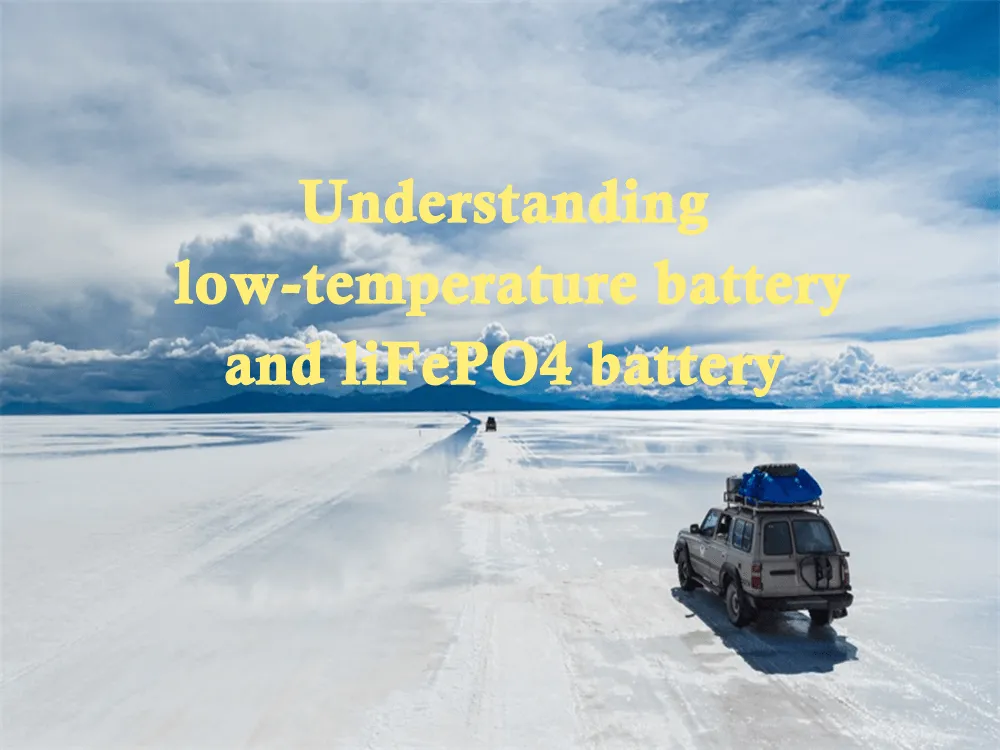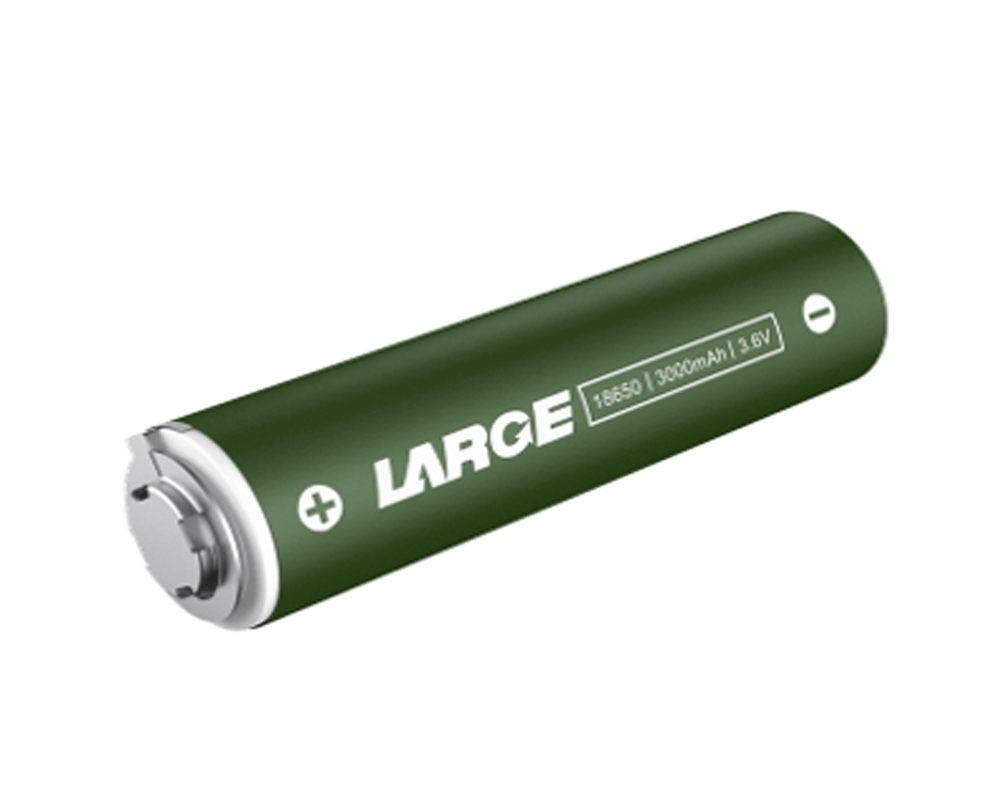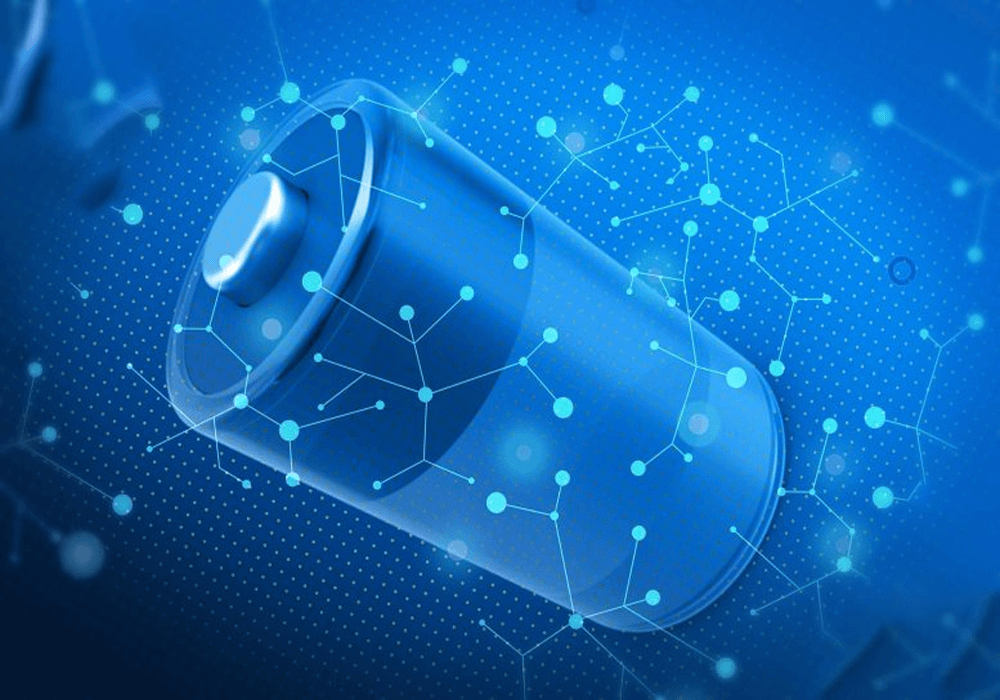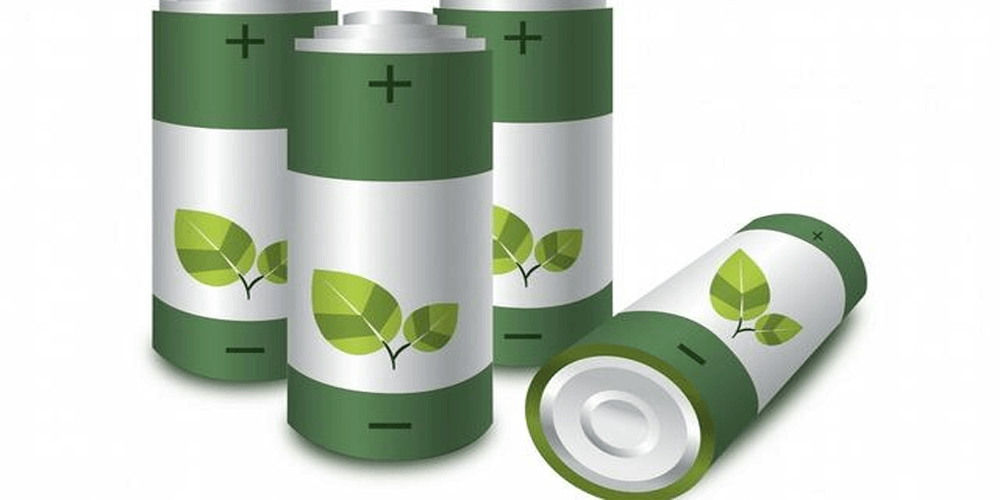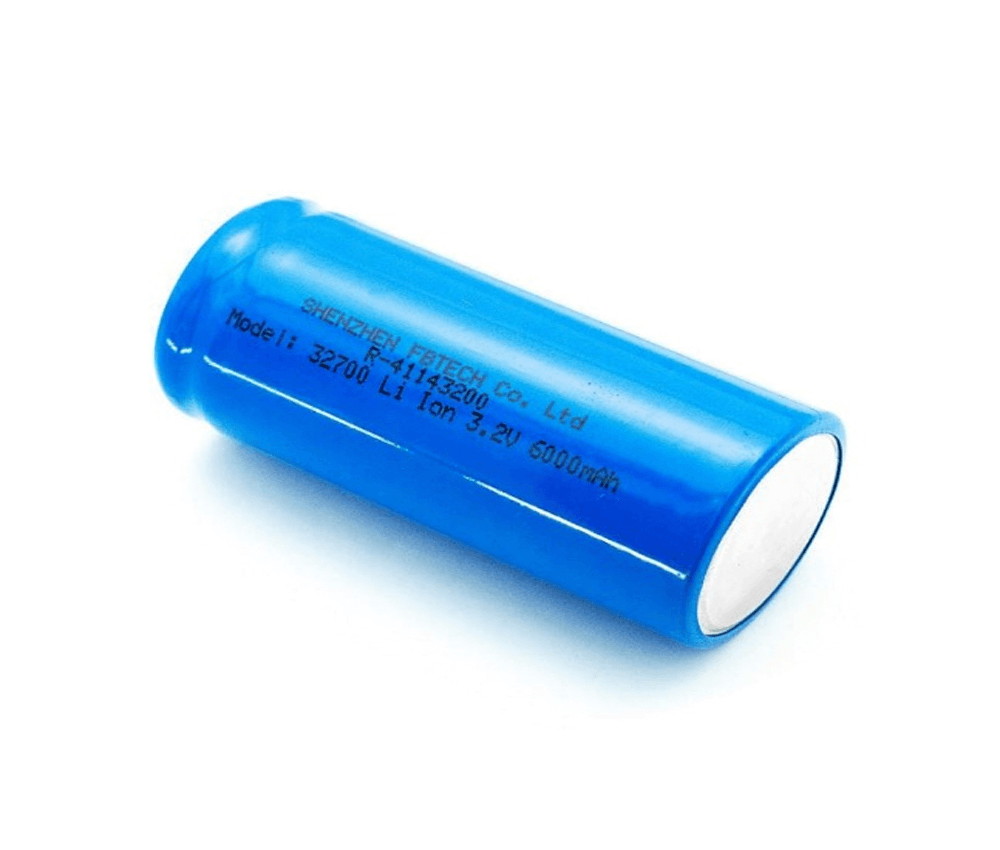Home » Battery Materials » Understanding low-temperature battery and LiFePO4 battery
Understanding low-temperature battery and LiFePO4 battery
- What is a low-temperature battery
- Life of battery and its relation with temperature
- Explain battery temperature is too low
- What should we do if the battery temperature is too low
- What is a LiFePO4 battery
- Lithium Iron Phosphate batteries performance in cold weather
- Charging tips for LiFePO4 low-temperature batteries
- New technology to solve Lithium-ion battery cold temperature charging
- Conclusion
What is a low-temperature battery
A low-temperature battery is a new generation lithium-ion battery, mainly used in a low-temperature environment. It is a unique battery developed to tackle the low-temperature defects that commonly appear in the performance of chemical power sources. As the name suggests, the low-temperature battery can power in extremely low temperatures as low as -50°C.
The low-temperature battery is ideal for equipment operating under icy conditions. So, the ability of lithium-ion batteries to work under such a low temperature of -30°C or below -50°C are beneficial for people living in such harsh weather condition.
A low-temperature battery can effectively power the electronic equipment requirement. Generally, at a -20°C weather condition, a typical lithium-ion battery can work without any issues. But when the temperature is below -30°C or even down -50°C, a low-temperature lithium-ion battery is imperative to keep the device moving forward.
For better performance of lithium-ion batteries, the internal and external temperature are crucial factors. The temperature will have a considerable impact on the performance and usage of lithium-ion batteries. When there are significant temperature variations, it will also be a reason for adverse effects on lithium-ion batteries.
For proper battery management, it is imperative to know the internal temperature of the lithium-ion battery. A reliable battery temperature management system can maintain the required environment to function the lithium-ion battery properly. Presently, we can find two types of battery management systems, active and passive temperature management systems. In the low-temperature lithium-ion battery, it will have an internal heating system. The new thermal technology on lithium-ion batteries heats the battery internally without any external heating techniques or electrolyte additives.
Let us explain the low-temperature battery usages with some examples. Low temperature lithium battery application fields are special equipment, deep-sea operations, polar scientific research, cold zone rescue, medical electronics, railways, ships, robots, etc.
The equipment will have temperature sensors to check the real-time temperature. Ordinary lithium-ion batteries cannot work or deliver the required electric power to run the refrigeration units under cold climate weather conditions.
Below -30°C ~ -50°C are beyond their operation limits. They can operate flawlessly between -20°C ~ +60°C. A regular LiFePO4 battery can deliver 10-20% of its power capacity under -20~0°C. Under the above weather condition, a LiFePO4 battery often fails to muster the necessary power. In such a condition, people need to go for a low-temperature LiFePO4 battery that can work under such hostile weather conditions.
Life of battery and its relation with temperature
It is not at all a secret that temperature has an impact on the life expectancy of a battery. The temperatures are also a reason to kill the battery performance. However, hot weather reduces the battery’s lifespan than cold weather. During a challenging weather condition, the chemical reaction within the battery will slow down, and as a result, it can extend the battery’s life. But still, there is a catch; when the chemical reaction becomes slow, it will affect the battery’s output. So, when the environment becomes extremely cold, the battery stop working.
The performance of the battery depends much on the hot and cold climate conditions of the environment. The hot temperature is a reason to shorten the lifespan of a battery. The chemical reaction in a battery becomes high during a high-temperature condition, which will be the reason for enhanced output.
The increased output will also be a reason for the quick degradation of the battery. But the slowdown performance of the battery in cold weather only exposes the ongoing degrading process of the battery. In an extremely hot climatic condition, when we get a battery expectancy of 30 months, we can expect the battery life for 55 months in a cold-weather climate. Therefore, the operating temperature range of the battery is one of the important conditions for choosing a battery.
The self-discharge rate of any lead acid battery will increase when the temperature is high, and it happens so because of the increased chemical reaction speed in the battery. But a lithium-ion battery offers higher power storage, outstanding performance and maximum life cycles. The performance factor has a direct relation to the battery’s lifecycle. When we get higher performance from the battery, obviously, its lifecycle gets compromised in the long run.
The charge acceptance level will decrease if the battery doesn’t operate at the accepted temperature. It happens because the ion combination in the battery is low. If you continue to charge the battery ignoring the climatic temperature conditions, that will be a reason to build pressure inside the battery resulting short circuit inside the battery.
Explain battery temperature is too low
The following information will give you a clear idea of charging and discharging readings between the lithium-ion and lead-acid batteries. By going through the above information, you can understand the importance of the charging temperatures and to what extent a battery can accommodate the charging temperature.
The operating temperature also varies subject to the type of battery. When a lead-acid battery can charge and discharge from -20°C to 50°C, the lithium-ion battery can charge and discharge from 0°C to 45°C and -20°C to 60°C, respectively.
Continued exposure of batteries to cold weather will also negatively affect safety and performance. In freezing weather, the batteries will show high resistance internally. The internal resistance will push the battery to apply more effort to deliver the power, and the batteries do the task by lowering the capacity. When the battery reduces its capacity, it also affects its charge and discharge rates. The effect of cold weather varies on batteries subject to their chemical formulas.
When your mobile temperature drops below 4°C, you will probably get a warning display as ‘battery temperature too low.’ If you are in a cold-weather belt area, then warm your battery immediately to restore the battery condition. There could be other conditions. Therefore, you have to check whether your phone displays the message repeatedly. If you don’t take any remedial actions, the battery will shut down.
What should we do if the battery temperature is too low
The following are some remedial actions to save your phone battery becomes dead.
Battery saving mode
If your battery charge reaches below 15-20%, you must activate the ‘battery saving mode’ immediately, which will keep them running for another 10-15 minutes.
Warm you phone
If the outside temperature is too cold, then keep your phone in a warm place. You can try holding the phone, tuck under the coat or in the pocket, and allow it warm for some time. Warming up will stop condensation and extend your phone’s battery.
Make a full charge
Always fully charge your phone, especially during the winter season. It will prevent power drain. Keep your charger handy and recharge whenever the charge goes below 15-20%.
Lithium-ion batteries depend on chemical actions to generate power. Lithium-ion batteries will show a slow performance or even stop working in an extreme cold-weather climate. The cold weather conditions drain the battery power quickly, and to overcome this; you have to charge the battery frequently. But you will find re-charging at low temperature will also be not smooth as in the normal weather conditions.
During cold weather, the ion will not move properly, and this slow movement will negatively impact delivering the required power. Therefore, if you live in a cold-weather location, it would be better to use low-temperature lithium-ion batteries with self-internal heating technology.
If there is no low-temperature lithium battery, the low voltage of the lithium battery caused by the low temperature environment can no longer maintain the normal use of electrical equipment,you could heat your lithium battery externally, cover it with a blanket, or place it in a heated space and charge it at a suitable charging temperature range
What is a LiFePO4 battery
LiFePO4 is the synonym for Lithium Iron Phosphate battery, or in short, we can call it an LFP battery. In an LFP battery, lithium iron phosphate is the cathode material, and the anode is the graphitic carbon electrode with a metal backing. It has a low operating voltage, and its energy density is much lower than an ordinary lithium-ion battery like Nickel Manganese Cobalt and Nickel Cobalt Aluminum.
Because of these features, it has an extended lifespan, low operation cost, and meager toxicity. These batteries are cobalt-free and have more significant utility factors; hence are ideal for electric vehicles and power backup solutions.
Lithium Iron Phosphate batteries performance in cold weather
Generally, during cold weather conditions, the chemical reactions inside the battery will slow down and be a reason for slow downing their performance and discharge capacities. Lithium-ion phosphate can perform better than sealed lead-acid batteries. LiFePO4 low-temperature charging battery works for an extended period, delivers more power, longer lifespan, and recharges faster than sealed lead-acid batteries.
From the above, we can understand that the amount of maximum power the battery can deliver will be much low. LiFePO4 low temperature charging the battery will have a higher discharge rate in cold weather conditions, i.e., in a low temperature than sealed lead-acid batteries. When a LiFePO4 shows a discharge rate of 70% at -17°C, a sealed acid battery can discharge on 45% of its capacity.
Charging tips for LiFePO4 low-temperature batteries
Even though LiFePO4 low-temperature batteries have many advantages, even can discharge capacity ≥75% at -50℃but has a significant disadvantage in low-temperature charging. You cannot recharge it at freezing temperature, especially when the temperature is -35°C. If you try to recharge LiFePO4 low-temperature batteries, it may be a reason for lithium plating. Lithium plating is a process that reduces the recharge capacity and develops short circuit issues, thus causing irreparable damages to the battery.
In a below-freezing temperature condition, if you want to charge a LiFePO4 low temperature charging battery, you have to raise its temperature immediately. The best method to increase the battery’s temperature is to shift it to a warm location. Wrapping the battery in a thermal blanket is also an excellent option to increase the temperature and keep it near a small heater.
New technology to solve Lithium-ion battery cold temperature charging
Lithium-ion battery technology has improved a lot recently, and the new technology in electrolyte chemistry is finding its way to charge a lithium-ion battery as low as -60°C. The new technology is a boon to electric vehicles and utility machinery that run on electric battery power. The new electrolyte that allows the battery to charge and operate efficiently in a colder/low-temperature environment will change how we use lithium-ion-powered equipment.
The new electrolyte chemistry can increase the energy density and improve the safety parameters of electromechanical capacitors and lithium-ion batteries. The new electrolytes let the electrochemical capacitors run below -80°C. Even though this is the case allowing lithium-ion batteries to run in a low-temperature environment, the room temperature of the battery needs to be appropriately maintained.
Conclusion
The most essential difference between low-temperature batteries and ordinary batteries is the difference in battery operating temperature. Low-temperature batteries have a wider storage temperature range than ordinary batteries. Charging a low-temperature battery is challenging if you start to charge the lithium-ion battery if the temperature falls below Zero or -35°C by not reducing the charge current.

